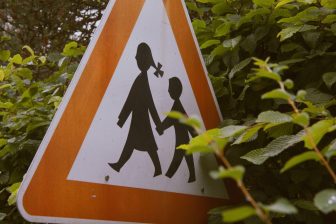
Children and young people are still being killed in huge numbers on our roads – WHO
Road traffic deaths are still the main killer of children and young people, says the World Health Organization.
The WHO’s latest global report on road safety, while recording a fall in the annual number of road related deaths in general, cannot disguise the fact that there are still more than two deaths every minute, and over 3,200 a day.
Since 2010, road traffic deaths have fallen by 5 per cent to 1.19 million annually, yet road crashes remain what the WHO calls ‘a persistent global health crisis’, with children, pedestrians, cyclists and other vulnerable road users facing an ‘acute and rising risk of death’.
Dr Tedros Adhanom Ghebreyesus, WHO Director General, responded to the organisation’s Global status report on road safety 2023, saying: “The tragic tally of road crash deaths is heading in the right direction, downwards, but nowhere near fast enough. The carnage on our roads is preventable. We call on all countries to put people rather than cars at the centre of their transport systems, and ensuring the safety of pedestrians, cyclists and other vulnerable road users.”
Global burden and vulnerable users
Among UN Member States, A total of 108 countries among UN member states recorded a fall in road traffic-related deaths between 2010 and 2021, with 10 countries achieving a 50 per cent reduction – these being Belarus, Brunei Darussalam, Denmark, Japan, Lithuania, Norway, Russian Federation, Trinidad and Tobago, United Arab Emirates and Venezuela. A further 35 countries also made good progress, cutting deaths by 30 to 50 per cent.
According to the WHO, some 28 per cent of road deaths were in the WHO South-East Asia Region, 25 per cent in the Western Pacific Region, 19 per cent in the African Region, 12 per cent in the Region of the Americas, 11 per cent in the Eastern Mediterranean Region and five per cent in the European Region.
Over half (53 per cent) of all road traffic fatalities are vulnerable road users, including pedestrians (23 per cent), cyclists (six per cent) and e-scooters (three per cent).
Worryingly, the report also reveals an ‘alarming lack of progress’ in advancing laws and safety standards. Only six countries have laws that meet WHO best practice for all risk factors, one of which is the requirement to have child restraints and seatbelts.
‘Road safety demands stronger commitments’
Pedestrian deaths rose three per cent to 274,000 between 2010 and 2021, accounting for 23 per cent of global fatalities. Deaths among cyclists rose by nearly 20 per cent to 71,000, accounting for six per cent of global deaths. Only 0.2 per cent have cycle lanes, leaving these road users dangerously exposed.
Michael R. Bloomberg is the founder of Bloomberg LP and Bloomberg Philanthropies, and also WHO Global Ambassador for Noncommunicable Diseases and Injuries. In his foreword to the report, he said: “Our mission at Bloomberg is to save and improve as many lives as possible, and one of the best ways to do that is to make more of the world’s roads safe for all.
“For more than a decade now, we’ve made encouraging progress together with the World Health Organization and our partners. Still, as this new report makes clear, road safety demands stronger commitments from governments worldwide – and we’ll continue to urge more leaders to take lifesaving action.”
This latest report comes on the back of the launch of the Global Alliance of NGOs for Road Safety’s Strategic Plan 2024-2030, as reported in Child in the City yesterday.
Responding to the WHO report, Lotte Brondum, Executive Director of the Global Alliance of NGOs for Road Safety, said: “The data in the Global Status Report shows that halving road deaths by 2030 is possible but inaction is still letting people down, especially those who can least afford it.
“The report calls on civil society to ‘generate evidence and hold leaders to account. NGOs’ role is to make these global numbers tangible and local, showing the reality of people’s daily journeys, and to make sure that our decision makers act upon the findings we read today to halve road deaths and guarantee people’s right to safe, affordable, accessible, sustainable mobility.”




